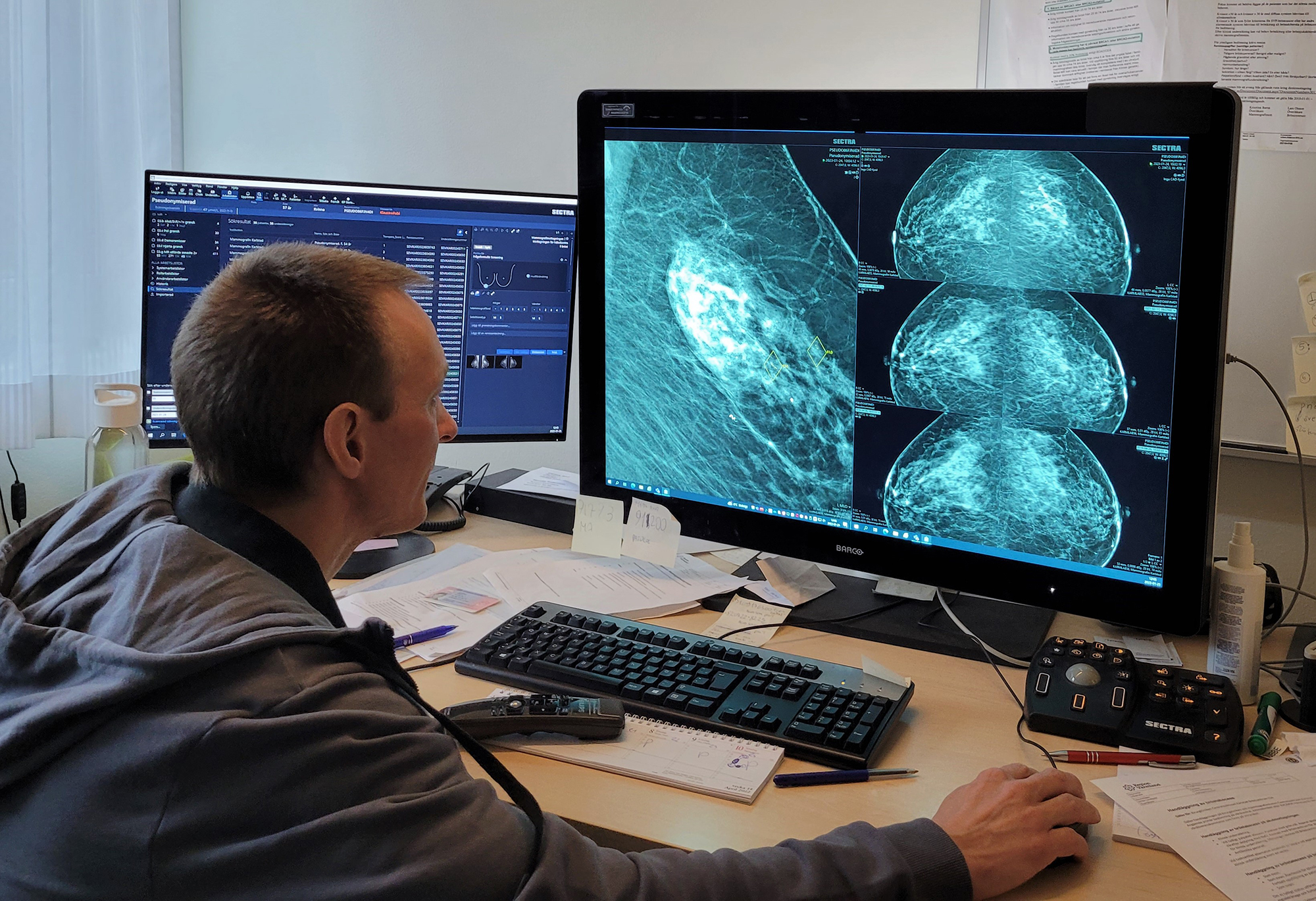Human and machine in symbiosis
Katalin Szögyi is a Chief Physician at the Breast Center at Karlstad Central Hospital and one of the breast radiologists who has been involved in the introduction of Transpara in Värmland. With the AI tool seamlessly integrated with the Sectra diagnostic imaging application, Katalin and the other physicians get help in prioritizing examinations that require their immediate attention when time is short.
“The AI tool can help us pre-sort all the examinations. Using a ten-point scale—a ‘Transpara score’—they are classified according to cancer risk, allowing us to focus on high-risk cases first if there are time constraints,” Katalin explains.
In addition to presorting, they use Transpara to support them in making decisions when suspected findings and their corresponding “AI points” are flagged using the function for computer-aided detection (CAD) in Sectra’s PACS. Human perception is then combined with computerized image analysis—human and machine in symbiosis.
“We’re very satisfied with this new way of working,” continues Katalin. “It’s a little hard to see why the algorithm sometimes gives a low score to something we physicians have trouble examining, such as a dense breast, and gives a high score to something that we, experienced physicians, can immediately see is healthy. But in general, I find that having the algorithm as a tool gives me a great deal of confidence. It never gets tired or distracted, and always delivers a consistent, high-quality result. We also often use the CAD function and take an extra look at the area that is marked as having the highest risk of findings.”
She says that it was easy for them to get started with the new procedure and that she feels the working environment has improved for the radiologists overall. “This way of working has now become completely natural for us and I would personally be sad if we no longer had access to the tool, because it really makes things easier and less stressful, and it allows me to feel more confident in my decisions.”
In the future, Katalin hopes that AI applications like Transpara will also take historical data into account, which she believes could reduce the number of “false positives” from the algorithm. “That’s often how we work to see if there really is a change, or if what may look abnormal is normal for that particular woman,” she concludes.




